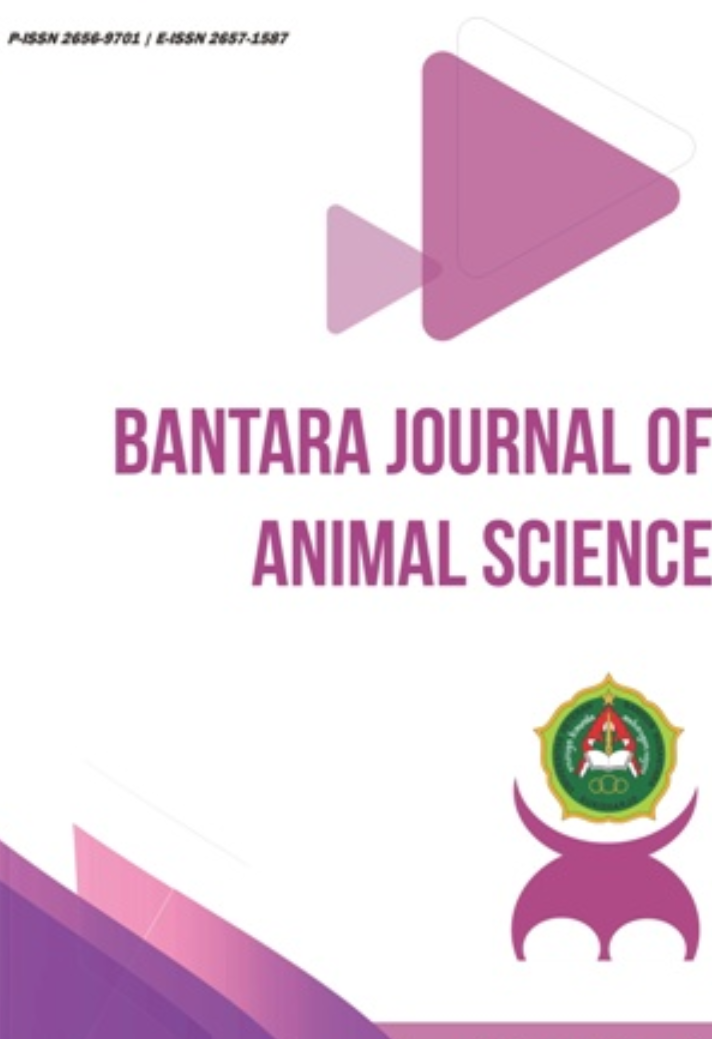Analysis of Yeast Mold Contamination in Commercialized Chicken Sempol in Karanganyar District, Karanganyar Regency, Central Java
DOI:
https://doi.org/10.32585/bjas.v5i2.4983Abstract
This research wants to find out if there is yeast mold in chicken sempol in Karanganyar Regency. The scientists used 10 chicken meat samples and a special kind of food for the bacteria to grow on. They also used water that had been purified. We did a study by watching how yeast mold grows, and then describing the results. The yeast mold test was done using the Total Plate Count (TPC) method. The samples were kept at a warm temperature for 7 days, and information was recorded on the 3rd, 5th, and 7th day. We compared the results with regulations from the Food and Drug Supervisory Agency (BPOM) No. In 2019, a new rule was made about how much yeast mold is allowed in processed meat. Please re-write this text using simpler words. The research found that samples A, B, and C had the most mold and yeast between the 3rd and 7th days of observation. At that time, sample G had the least amount of mold and yeast.
Keywords:chicken sempol, yeast mold contamination, TPC.
Downloads
References
Adawyah, R. (2023). Pengolahan dan pengawetan ikan. Jakarta : Bumi Aksara.
Arantika, W., Umboh, S. D., & Pelealu, J. J. (2019). Analisis Tingkat Populasi Jamur Tanah Di Lahan Pertanaman Kentang (Solanum Tuberosum L.) Berdasarkan Metode Total Plate Count (TPC). Jurnal Ilmiah Sains, 105-110.
Badan Pengawas Obat dan Makanan (BPOM). No 13 Tahun 2019 : Batas Maksimal Cemaran Mikroba dalam Pangan Olahan. Jakarta : BPOM.
Faturrachman, F., & Mulyana, Y. (2019). The Detection of Pathogenic Fungi on Prayer Rugs of The Mosques at Jatinangor Campus of Universitas Padjadjaran. Journal of Medicine and Health, 2(3).
Manoe, J. A., Hinga, I. A. T., & Setyobudi, A. (2019). Uji organoleptik produk tahu berdasarkan suhu dan lama penyimpanan terhadap mutu tahu di Kabupaten Kupang. Timorese Journal of Public Health, 1(2), 96-108.
Nurtanti, I., Wijayanti, D. A., Wianto, A. O., & Ratnaduhita, A. (2023). Chemical Analysis and Nutritional Assessment of Chicken Sempol in Local Markets. Academia Open, 8(1), 10-21070.
Pitri, R. H., Sugiarto, S., & Husaini, A. (2020). Faktor Yang Berhubungan Dengan Praktik Hygiene Penjamah Makanan Di Sekolah Dasar Wilayah Kerja Puskesmas Tanjung Pinang. Journal of Healthcare Technology and Medicine, 6(2), 732-741.
Rorong, J. A., & Wilar, W. F. (2020). Keracunan makanan oleh mikroba. Techno Science Journal, 2(2), 47-60.
Rosmiah, R., Aminah, I. S., Hawalid, H., & Dasir, D. (2020). Budidaya jamur tiram putih (Pluoretus Ostreatus) sebagai upaya perbaikan gizi dan meningkatkan pendapatan keluarga. ALTIFANI Journal: International Journal of Community Engagement, 1(1), 31-35.
Susilo, A., Rosyidi, D., Jaya, F., & Apriliyani, A. W. (2019). Dasar teknologi hasil ternak. Universitas Brawijaya Press.
Winarsih, W. H. (2018). Penyakit ternak yang perlu diwaspadai terkait keamanan pangan. Cakrawala, 12(2), 208-221.
Wulandari, S., Nisa, Y. S., Taryono, T., Indarti, S., & Sayekti, R. S. (2021). Sterilisasi Peralatan dan Media Kultur Jaringan. Agrotechnology Innovation (Agrinova), 4(2), 16-19.
Zubaidah, S. N., Widiastuti, T. C., & Kiromah, N. Z. W. (2022). Uji Angka Lempeng Total (ALT) dan Angka Kapang Khamir (AKK) pada jamu gendong kunir asam dan beras kencur di pasar tradisional Kecamatan Kuwarasan Kabupaten Kebumen. Jurnal Farmasi Klinik dan Sains, 2(2), 27-32.





